The Kunsthaus Zürich is to receive the
collection of Gabriele and Werner Merzbacher as a long-term loan, one of the
most important private collections of modern art. A total of 65 works have been
promised to the Kunsthaus for at least 20 years. They include paintings by the
great masters of Impressionism, Post-Impressionism and Fauvism, members of the
‘Brücke’ and ‘Blauer Reiter’ groups, and many more. The cooperation, which
involves 65 paintings and a minimum commitment of 20 years, is a gesture of
gratitude to Zurich and Switzerland by Werner Merzbacher, who was born in
Oehringen, Germany, in 1928 and came to Switzerland as a child refugee in 1939,
and a chance for him to share his passion for art with the public at large. The
Kunsthaus Zürich has been given the opportunity to view almost 200 paintings
and sculptures and select the works that best complement its own important
holdings and the Bührle Collection, which also moves to the enlarged Kunsthaus
from 2020.
The artists represented include leading figures from the key
European art movements of the 20th century: Impressionism (Monet, Cézanne,
Renoir), Post-Impressionism (van Gogh, Picasso), Fauvism (Derain, Matisse,
Vlaminck, Braque), the ‘Brücke’ (Heckel and Kirchner), Germans persecuted in
the Third Reich such as Nolde, Barlach and Beckmann, ‘Blauer Reiter’ members
Jawlensky, Kandinsky and Münter, Italian Futurists (Severini, Boccioni),
Russian Constructivists (Malevich, Goncharova and others), the Cubist Léger and
Spanish artist Miró. Among the more recent artists of the 1950s to 1990s are
Richard Paul Lohse and Sam Francis as well as Calder, González, Tinguely, Moore
and Rickey.
A FEAST OF COLOUR FOR GENERATIONS
At the most immediate level, the
works are linked together by the dominance of colour. They will combine to
present visitors to the Kunsthaus Zürich with a dazzling panorama spanning the
birth and evolution of the most significant schools and movements in modern
art. The starting point of the collection is the exclusive group of exceptional
works thatGabriele Merzbacher-Mayer inherited from her grandparents Bernhard
and Auguste Mayer and that, since the 1960s, has been progressively enriched
through further acquisitions of great art. Werner Merzbacher picks out those
that touch him because, as he says, they resemble his own character. The
selection that will be coming to the Kunsthaus therefore tells a dual story,of
both art and a family.
INTERNATIONAL SUCCESSES
The collection assembled by the
businessman and his family, who live in the canton of Zurich, has already been
exhibited to great acclaim, drawing hundreds of thousands to exhibitions in
Jerusalem (1998/99), various Japanese cities including Tokyo (2001), and London(2002).
Among the highlights of the Royal Academy show were:
Cézanne, Still-Life, Skull and Candlestick, 1866-7,
Derain, Boats in the Port of Collioure. 1905,
Van Gogh, Garden with Weeping Willow, 1888,
Renoir, Portrait of a Young Woman, 1901,
Picasso, The Couple (The Miserable), 1904,
Matisse, Interior at Collioure, 1905,
Braque, L’Estaque, 1906.
There were several works each by Vasily Kandinsky, Paul Klee, Ernst Ludwig Kirckner, Emil Nolde, Jawlensky, Erich Heckel, and Karl Schmidt-Rotluff. Certain works in the context of this exhibition create an unexpectedly forceful presence, for example,
the marvellous portrait by Alexej Jawlensky, Lady in a Yellow Hat, c.1910, a determined vital work,
and Max Beckmann’s Woman with a Red Rooster, 1941, a painting with implied drama and tension and strong formal preoccupations.
From 24 August to 27 November, 2016, the Van Gogh Museum presented highlights from the Merzbacher Collection. The paintings in the exhibition Van Gogh Inspires: Matisse, Kirchner, Kandinsky: Highlights from the Merzbacher Collection
showed the impact Vincent van Gogh had on the most important artists of
the early twentieth century.
The selection includes Interior at Collioure (Afternoon Rest) by the Fauvist Henri Matisse, (above)

Autumn Landscape with Boats by the Blaue Reiter artist Wassily Kandinsky,
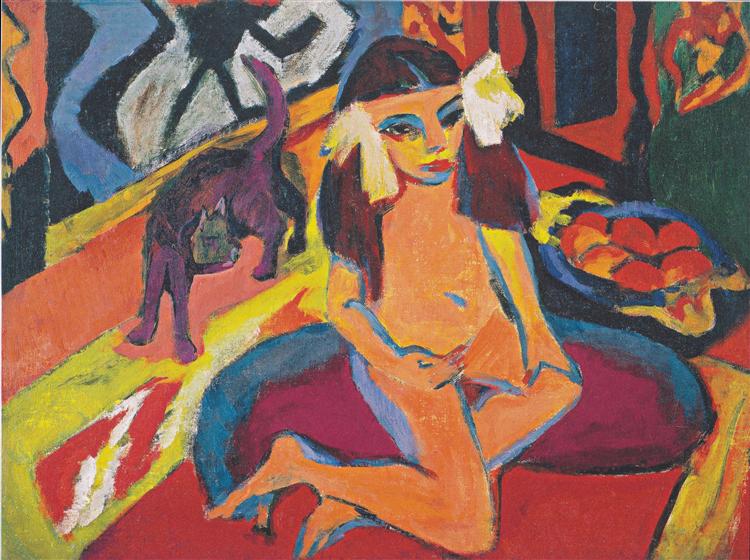
and the expressive Girl with Cat, Fränzi by Ernst Ludwig Kirchner of the group Die Brücke.
Each is an iconic example of the respective artist’s oeuvre. The private art collection assembled by Werner and Gabrielle Merzbacher is considered one of the finest in the world. All the loans are being shown in the Netherlands for the first time.
Van Gogh: ‘the father of us all!’
Vincent van Gogh wrote in a letter to his brother Theo that ‘painters being dead and buried, speak to several following generations through their works’. Van Gogh did indeed become a shining example for generations of artists after him. Beginning in 1905, the Fauvists in France and the German Expressionists of Die Brücke and Der Blaue Reiter looked for ways to heighten the evocative power of their works.Van Gogh’s colourful, animated and emotionally charged paintings offered them a source of inspiration. The vitality of his work encouraged both the Fauvists and the Expressionists in their need to express their emotions through their art. These innovative artists took Van Gogh’s pursuit of freedom in form and colour to a new level. Or, as the Brücke artist Max Pechstein later declared: ‘Van Gogh was the father of us all!’
Inspiration
Maurice de Vlaminck, one of the French Fauvists, wrote:‘I found in him some of my own aspirations. ...And at the same time a revolutionary sense, an almost religious feeling for the interpretation of nature. When I left the retrospective, my soul was deeply moved’As a result, de Vlaminck’s paintings were imbued in the years that followed with the same kind of intensity as, for instance, Van Gogh’s shimmering wheatfields. With its colourful combination of bright tones and powerfully defined brushstrokes, The Potato Pickers immediately recalls Van Gogh’s Wheatfield with Crows. De Vlaminck’s decision to structure the composition diagonally further heightens the scene’s dynamism.
Teacher and example
Van Gogh’s inspiration is similarly palpable in the works of the German Expressionists. The Blaue Reiter artist Alexej von Jawlensky went so far as to buy a painting by Van Gogh from Theo van Gogh’s widow. He wrote to her:‘Van Gogh was to me both mentor and example. As a person and as an artist, he is precious and dear to me. To possess something by his hand was my deepest wish for many years.’
Alexej von Jawlensky, Dark Blue Turban (Helene with Dark Blue Turban), 1910, oil on cardboard mounted on wood, 72 x 69 cm, Merzbacher Kunststiftung
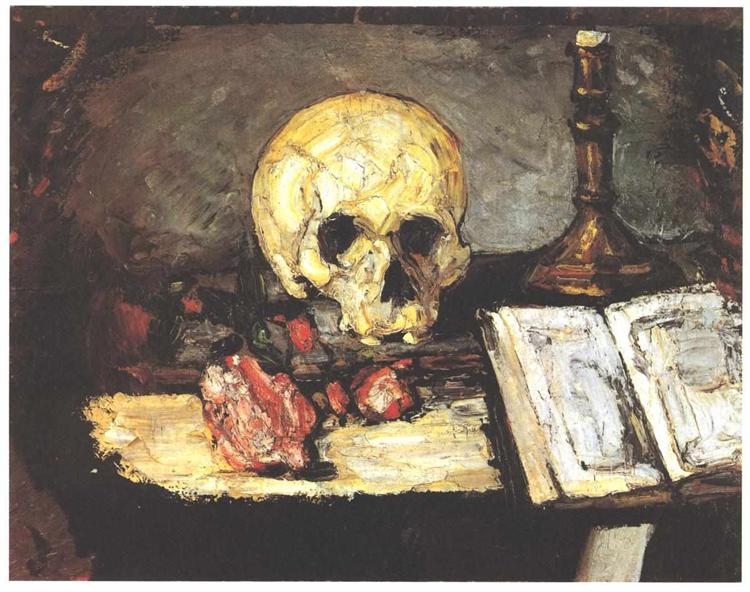

.jpg!HalfHD.jpg)
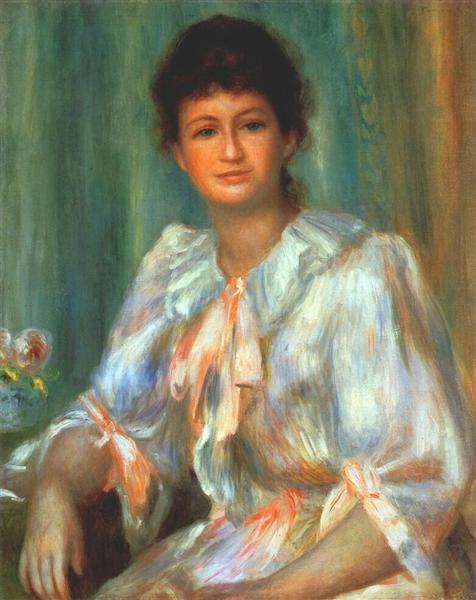

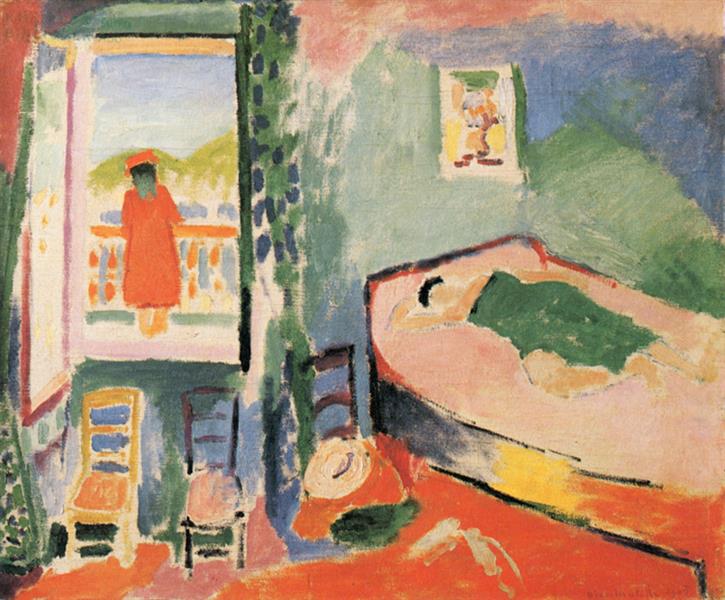
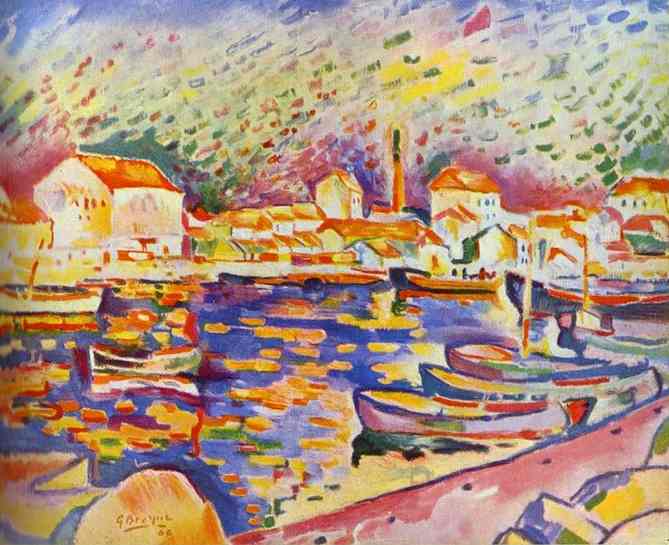
![Image result for [[["xjs.sav.en_US.BuG9CZeYrCc.O",5]],[["id","type","created_timestamp","last_modified_timestamp","signed_redirect_url","dominant_color_rgb","tag_info","url","title","comment","snippet","image","thumbnail","num_ratings","avg_rating","page","job"]],[["dt_fav_images"]],10000]](https://i.pinimg.com/originals/d0/3e/34/d03e34d8cef32475ad1742c9eb784994.jpg)
![Image result for [[["xjs.sav.en_US.BuG9CZeYrCc.O",5]],[["id","type","created_timestamp","last_modified_timestamp","signed_redirect_url","dominant_color_rgb","tag_info","url","title","comment","snippet","image","thumbnail","num_ratings","avg_rating","page","job"]],[["dt_fav_images"]],10000]](https://i.pinimg.com/originals/c0/8a/b9/c08ab9d91d464150675f75d767f091d7.jpg)
